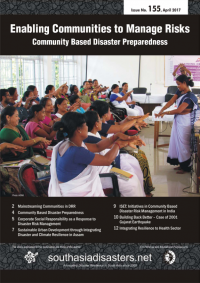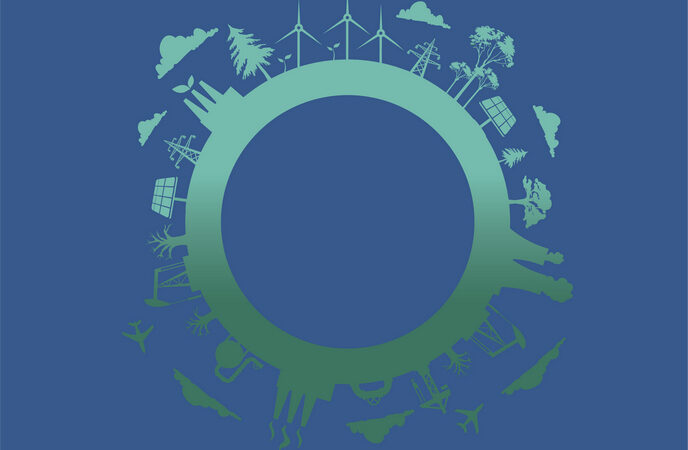Community Based Disaster Preparedness – Southasiadisasters.net Issue No. 155, April 2017
from All India Disaster Mitigation Institute
This issue of Southasiadisasters.net focuses on the most important theme of Global Platform for Disaster Risk Reduction held at Cancun, Maxico. Community Based Disaster Preparedness: Enabling Communities to Manage Risks. It primarily focuses on how CBDP can empower communities to manage their risks through locally owned and locally appropriate approaches. The key lessons from ASDMA’s recently finished capacity building project on CBDP have also been highlighted in this issue. The rationale behind promoting CBDP is that communities are the first responders of a disaster, therefore they should be given the necessary training to mitigate and manage their risks.
Moreover, given the dynamic nature of risk, CBDP makes for a more relevant, inclusive, bottom-up and effective approach to disaster risk reduction. This issue is also a compendium of the emerging areas like climate risks and how they impact communities at the local level. Capacity building for CBDP can also be viewed as the democratization DRR by enabling communities to build their own resilience using approaches best suited to them.
The impacts of disasters can be broadly categorized as direct and as indirect. Direct impacts refer to quantifiable losses such as the number of people killed and the damage to buildings, infrastructure and natural resources. Indirect impacts, in contrast, include declines in output or revenue, and impact on wellbeing of people, and generally arise from disruptions to the flow of goods and services as a result of a disaster. The contextual and localized nature of indirect impacts make it difficult to control them. One possible way of controlling them is through Community Based Disaster Preparedness (CBDP).
This issue’s contents includes: (i) Mainstreaming Communities in DRR; (ii) Community Based Disaster Preparedness; (iii) Corporate Social Responsibility as a Response to Disaster Risk Management; (iv) Capacity Development and Context of DRR-CCA in Assam; (v) Sustainable Urban Development through Integrating Disaster and Climate Resilience in Assam; (vi) ISET: Initiatives in Community Based Disaster Risk Management in India (vii) Building Back Better – Case of 2001 Gujarat Earthquake and Integrating Resilience to Health Sector.
Some of the best thinkers, researchers, experts, and activists, including Mihir R. Bhatt with AIDMI Team; Dr. Ramesh Vaghani, Head, and Mrs. Kruti Mehta, Faculty, Department of Social Work, Saurashtra University; Kishore Dutta, ASDMA; Abrina Williams, Social Media Correspondent, ISET–International, USA and Chirag Bhatt, Bhuj Area Development Authority (BHADA), Gujarat.



